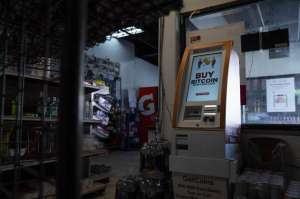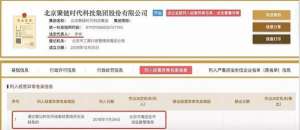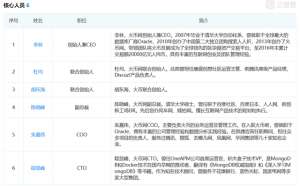欧艺平台下载地址(「专访」IGAVEL罗梅生:亲身讲述 艺术电商这份钱要怎么赚?)

展览时间:
9月8日-9月16日(周日闭展) 10am-5pm
地址:纽约市229号东120街
9月和10月最重要的两场拍卖:
9月15日-10月3日 中国玉器,鼻烟壶专场——来自一位美国南部藏家
10月6日-10月25日 中国和亚洲艺术品秋拍
刚刚入秋,一如往季,秋拍的战火再次从纽约开始。纽约亚洲艺术周和往年一样,已经成为一项不能错过的年度艺术盛会,而参加亚洲艺术周的拍卖行有5家,除了众所周知的苏富比、佳士得、邦瀚斯,还有纽约道尔和IGAVEL爱嘉福 。IGAVEL与前几家都不一样,它是一个专门提供给合作拍卖行使用的网络拍卖平台,做纯粹的电商服务。IGAVEL的掌门人是资深的中国艺术品专家罗梅生(Lark Mason)。罗梅生(Lark Mason)先生在拍卖和古董行业有着相当资深的背景。他是《亚洲艺术史》的作者,是王世襄《明清家具鉴赏》的英文译者。曾在苏富比纽约总部工作长达24年,历任中国艺术部及苏富比在线交易的高管。2003年离开苏富比后,罗梅生先生创办了自己的古董艺术交易网站。今天听起来,做网络拍卖似乎并不新鲜,然而倒退14年,在互联网发展还没有那么成熟的时期,能够想到做艺术品电商平台不得不说是一个有眼力的决定。
《TEFAF艺术品市场报告》中就指出近几年,网上交易这个蛋糕是越来越大。而中国内地在10、11年以后也如雨后春笋般发芽了一批艺术品电商平台,但是尽管试水得很多,迄今为止,内地并未出现特别成功的艺术品电商平台。IGAVEL从03年创立至今已成功运营14年,特此美欧艺拍采访了IGAVEL的创始人罗梅生先生,让他亲身讲述如何从苏富比到自我创业的心路历程,网上交易这份钱又要怎么挣?
罗梅生先生
从苏富比到自我创业
美欧艺拍:驰骋拍场多年,很想知道怎样的缘分让您接触艺术品拍卖?又是什么样的机缘促使您走上这条职业道路?
罗梅生:1978年的时候,我有幸从一大批的候选人中脱颖而出,参加了由Derek Shrub先生所主导的伦敦苏富比的艺术课程。Derek Shrub先生是一位非常专业的艺术专家,且是一位通才,对各个领域的艺术都有研究。在完成了长达一年的训练之后,我入职纽约苏富比成为一位综合评估师。这个角色是要针对所有类型的艺术品做综合评估:无论是油画还是雕塑,当然这些艺术来自美国、欧洲以及亚洲地区。在这个过程中,我开始逐渐对亚洲艺术越来越熟悉,尤其是经过了几个特殊的案例——如非常有名的大威德基金的收藏以及大英博物馆和维多利亚博物馆的一些经典藏品——凡此种种都奠定了我的基础,使我在亚洲艺术专家的道路上走得更加坚实。
元或明代透雕海水龙纹玉牌
长:3.13英寸(7.9厘米)
估价:4,000-6,000美元
(9月15日-10月3日 中国玉器,鼻烟壶专场)
美欧艺拍: 具体到中国家具,我知道您也是这个领域的专家,为什么会选择研究中国古典家具?
罗梅生:用时间痕迹学来观察中国的瓷器和家具,人们会发现二者正好背道而驰。瓷器更像是“冻龄”,将精美的纹样保护在了釉层之下,虽然历经了几百年,甚至更长时间。而木制家具却在岁月中尽显年华留下的痕迹。从本质上来说,木头是有机物,当被刮伤或沾污后,它的外观会被改变,显现出一种特殊光泽,我们业内称之为“包浆”。这些家具身上的痕迹真实地反应出了它们在历史长河中是如何被使用的,例如:断了桌腿应该是由暴力行为引起的,无论故意与否;器物表面的一些污垢可能是由于意外的撒、漏或灾难性的事件,甚至可能是屋顶上的一块松动的瓦造成的。我们不知道造成这些变化的原因和手段,但我们真实的在家具身上看到这些情况已经发生,由此我们可以去推测原因和途径。
家具被用来使用和欣赏,它功能性地展示了制造者的技能和思想。我把古家具看成是一本没有文字的书、是一种无法翻译的语言,甚至是一种几乎无法理解的语言,它在召唤和逃避我们。它是一种高超的设计,只有受到过良好教育的人才能够既懂得使用也懂得欣赏它们。当古家具与我们相融相处时,确实让人着迷。我们可以惬意坐着,可以伏案写着,可以悠闲躺着,古时的储存空间可以存放现世的东西,它俨然成为我们居家办公环境的一部分。中国家具综合了所有文化家具中最好的元素。它们生来都是要被使用的,而不是被人们远远地欣赏,因此我并不赞成用“收藏”这个概念。
元或明代青玉透雕龙穿花纹帽顶
高:2.7英寸(6.8厘米)
估价:5,000-7,000美元
(9月15日-10月3日 中国玉器,鼻烟壶专场)
美欧艺拍:说到家具市场,在最近的几年里可谓是突飞猛进。您认为是什么因素刺激的? 您从业时间很长,对这些年来古家具收藏市场的藏家构成有什么新的看法?
罗梅生:从上世纪80年代到2003年,我一直在纽约苏富比工作。这一时期,纽约市场一直是中国家具的交易中心。我知道有很多美国人在20世纪早期的时候生活在中国,并在二战之后购买了大量的中国家具。再后来,由于新中国成立,香港的古董商将大量中国家具外销至美国和欧洲。随着最早一批收藏家的年龄越来越大,导致越来越多的中国家具进入了纽约的拍卖市场。我就非常幸运,在我从业期间就卖出过大量的中国家具,尤其是在上世纪80年代到90年代中期,几乎每年家具的拍卖都能创造新的纪录。
自从王世襄先生写《明式家具研究》与《明式家具鉴赏》两本书,对整个家具界影响十分深远。我曾将其中的《明式家具鉴赏》翻译成了英文并出版。王老先生知道我是苏富比1980-1988年期间负责重要家具作品拍卖的专家,因此提出要求,希望我能够加入他们为期8个月的工作翻译此书。与王老一起工作,我也获益匪浅。王老的两本书不仅仅重新燃起了大众对于家具收藏的兴趣,也直接使得两大拍行苏富比、佳士得将黄花梨及其他珍贵木料的家具纳入大拍之中。在此之后,这一领域的专题讨论不断,专题研究频出,导致新入行的藏家对古典家具这一主题保持了持续的关注。
明代缠枝花卉如意古钱纹大盘
直径:19.25英寸(48.8厘米)
估价:30,000-50,000美元
(10月6日-10月25日 中国和亚洲艺术品秋拍)
到20世纪90年代后,市场上家具的供应量开始减少,与此同时中国大陆变得越来越富有,使得家具市场开始从美国往大陆转移。随着中国经济的持续发展,越来越多的中国买家开始购买中国家具,于是就有了这样的现象:越来越多的中国买家每年来到纽约淘宝,但是可以被购买的家具却越来越少。或许,纽约中国家具市场的顶峰点应该算佳士得举办的安思远藏品专场拍卖。在这场重要的拍卖中,很多家具作品都创造了新的纪录,这些纪录几乎都是由亚洲买家创造的。尽管直到今天,纽约仍然是中国家具销售的重要市场,但随着早期收藏家越来越少,不可否认,从长期趋势看这一市场正在向中国转移。中国家具的价格也随着整个中国艺术品市场的攀升而水涨船高。
美欧艺拍:您之前是苏富比拍卖行的专家,从离开苏富比到自己创业,经历了怎样的一个转变?
罗梅生:1979-2003年,我都在纽约苏富比任职。我有幸在很多个职位上逗留,从综合评估师到线上部门的负责人,所有的经历都是非常难得。但最让我兴奋的还是艺术和电子商业的融合——Sotheby's.com——这是苏富比在线拍卖网站。“拍卖”这个形式的独特之处在于能在一个有限的时间跨度里公开展示作品,迫使买家们做出购买与否的决定。传统上,拍卖只局限于出席者,但随着时间的推移,通过电话竞标可以让更多的人远程参与,进而互联网再次改变竞价模式,让更多的人,甚至可能从未听说过苏富比或其他国际拍卖行的人也可以来竞买艺术品。当苏富比在2003年决定关闭他们的在线拍卖服务时,我可以选择留下或离开——这对我来说是一个非常艰难的决定。最终,我决定创建一个在线拍卖平台,可以让一些中小型的拍卖公司借此接触到大量的客户。于是,我在2003年创立了IGAVEL平台,随后不久,我又创立了自己的拍卖行Lark Mason Associates 。
清18世纪饕餮纹铜洒金尊
高:9英寸(22.8厘米)
估价:1,200-1,500美元
(10月6日-10月25日 中国和亚洲艺术品秋拍)
美欧艺拍:您是一位艺术商人,整天与艺术品打交道的同时会否经不住诱惑而亲自去收藏?哪一类艺术最博您青睐?
罗梅生:我从来不认为自己是收藏家,但我非常喜欢被艺术品环绕的感觉。我大部分的私人收藏是亚洲艺术尤其是中国艺术品,但我也有不少来自美国、英国以及法国的藏品。我最喜欢的一件藏品要数清早期的一张黄花梨架子床,我和我的太太非常早的时候就买下了这件作品,我们的三个孩子几乎都是睡在上面长大的。和这些完美的艺术品一起生活是一种享受和乐趣,在工作和生活中这些艺术品常常带给我们以启发。
清18世纪八扇人物山水绢本画屏风(局部图)
高:74.75英寸(190厘米),每扇宽:25.25英寸(64厘米)
怎么赚“网上交易”这份钱?
美欧艺拍:您创立IGAVEl的时候,网络拍卖想必还没有今天这般普及,首创一项事业是否困难重重?您是怎么面对和解决的?
罗梅生:早期的在线销售显然非常困难,最大的问题在于人们对这种方式的不信任和缺乏安全感。由于电力需求激增、停电或其他故障导致线上拍卖中断的情况经常出现,这令人抓狂,因为它们通常是我们无法控制的。所庆幸的是,还是时间解决了大部分问题。随着互联网技术的发展,硬件变得越来越稳定,但与此同时其他问题也出现了:例如竞标后的付费问题。我们制定了一项规定,要求新客户证明他们的信用可靠性,以便我们进行的拍卖销售对所有参与者体现公平性。我们的措施是非常有效的,并且已经被许多在网上销售的大公司所采用。
清仿古错金银铜貘尊
长:15英寸 (38.1厘米)
美欧艺拍:其实拍卖平台并不鲜见,比方有salesroom、invaluable、bidsquare,凡此种种,您觉得IGAVEl 与他们相比,最大的不同,或者是特点在哪里?
罗梅生:相比您提到的这几家互联网公司,我们是一家小公司。这些公司在提供互联网技术层面都做得很好,但我们的角色不仅仅是提供一个互联网技术平台,IGAVEL致力于支持所有入驻我们平台的拍卖行。我们帮助拍卖公司在平台上做推广,我们还积极帮助拍行审查竞投人。我们比其他任何在线平台都要透明得多,对待所有买家一视同仁。在我们平台上,所有拍品的保留价都是对外公布的。我们保证让所有的拍卖行提供作品的高清且真实的图片以及品相报告。并且有两周的预览时间。最主要的,与其他拍卖不同,我们对于拍卖行是有挑选的,并不是所有的申请者都有资格入驻我们平台,最重要的条件就是所有拍卖行都需要达到我们要求的公开和透明度。
清代粉彩花鸟纹碗一对 成化款
直径每只:7.5英寸 (19.2厘米)
估价:15,000-25,000美元
(10月6日-10月25日 中国和亚洲艺术品秋拍)
美欧艺拍:从事网络拍卖多年来,主要针对的用户是哪些:收藏家?古董商?这些用户是不是主要分布在美国?
罗梅生:我们的用户构成:藏家和商人大概是一半对一半。我们有大量的客户来自美国和中国。由于我们的高透明度和高信用度以及我们追求较高的道德标准,使得我们很多的用户完完全全依赖于我们的网上描述,不需要亲自检验货品。很多其他的拍卖公司在做网上销售时,没有提供足够的信息,使得客户在购买时不够“舒服”。我们总是尽最大可能将最多的信息提供给有意向的买家。我们的客户有较高的消费能力,他们多次地购买了那些售价超过1万美元甚至超过10万美元的物品。
英国保罗斯托制造乔治三世纯银餐桌中心托盘一对,1805年
高:14.5英寸(36.8 厘米)
估价:20,000-40,000美元
(9月21日-10月10日 9月/10月室内装饰艺术品拍卖)
保罗斯托是英国19世纪最著名的银匠,他的作品是新古典主义时期和摄政时期风格的经典代表。这对纯银打造的托盘是典型的新古典主义风格,上各有两个圆润的小天使和一只狮子在嬉戏,天使用手臂托起葡萄藤叶装饰的精美盘子,用来在隆重的晚宴的餐桌中间盛放水果和甜点。既向古典的罗马艺术致敬,又充满了生气和童趣,在餐桌上一定会吸引宾客的眼球。
美欧艺拍:从苏富比接触了网拍,到IGAVEL较长时间的互联网拍卖历练,从中获取的经验不可小觑。iGavel网拍曾单件高达3000万的成绩令人瞩目,您觉得互联网拍卖最大的发展体现在哪里?未来的发展趋势如何?(请看美欧艺拍以往文章链接“网拍单件3000万,他们是如何做到的?”)
罗梅生:互联网需要解决的最大问题是信任和稳定性。买家最想及时知道的是这些拍品是如何被描述的。为此我们花了大量的精力来确保客户能够获得关于我们销售的物品的准确信息,并知晓将某件物品买到手的最终成本。在线销售的迅速增长已经发生,因为人们发现网上购物更方便、快捷,而且相信他们会得到公平的对待。这在很大程度上要感谢那些大的电商平台,例如亚马逊等,人们几乎每天都在上面购物。艺术品拍卖略有不同,因为所有的拍品都是独一无二的,而且在写说明和运输方面也均需要一定的专业知识。仅就运输而言,亚马逊就无法提供专业的艺术和古董的包装和运输。所以我们也在尽力改善这方面的体验,我们近期刚刚有一个进展:就是在得克萨斯州建立了一个艺术仓储/配送中心,这里将作为美国中西部地区的中转站。
詹姆斯·爱德华·巴特沃兹(英国/美国画家 1817-1894)志愿者号,布面油画,1880
尺寸:19.6 x 29.8厘米
估价:40,000-60,000美元
(10月26日-11月16日 珍贵家居装饰和航海绘画拍卖——来自一位知名电影制作人的私人收藏)
詹姆斯·爱德华·巴特沃兹是著名的英国画家,尤其以他的航海绘画闻名。他在美国居住生活的时候经常去美国的航海比赛,把获得冠军的帆船画下来。这幅油画里的志愿者号是1887年那届比赛的胜出者,他擅长描绘出微小的细节,以精细的笔触画出轮船的桅杆和撑吊的天线,并制造出戏剧性的背景张力,让人仿佛感受到迎面呼啸而来的海风和亲眼目睹航船乘风破浪的样子。
美欧艺拍:如今无论在欧美还是中国地区,都兴起了越来越多的互联网平台,您又是如何看待这一领域的竞争问题?
罗梅生:竞争无疑让我们做得更好。现在很多线上的平台都是仿照了我们公司的形式。我们公司在艺术与古董领域维系了15年之久,成为唯一的一家在线专业平台。延时拍卖这种形式就是我们所发明的,并且我们提供公开的底价和品相报告,到目前为止只有我们一家公司这么做。包括对竞买者的审核也是由我们率先发起的,同时我们推行“线上展览”模式,这个模式是我在Sotheby.com就采用的。其实,1万美元以上的高价拍品在网络拍卖中是不容易售出的,但是对于我们公司来说就很常见!我们将继续保持销售的透明度,如果拍品没有描述,竞投人可以保留追索权。当下,IGavel开拓了一这种方式:一家大的公司可以在不移动艺术品的时候进行销售,这样就减少了其中的运输物流成本和东西被损坏的风险。这种类型的销售方式是我们10年前就开始尝试并不断推进,我们还将尝试新的在线销售方式。我们并不认为IGAVEL适合所有的拍卖行,只有那些拍卖行愿意做更多的合作,愿意让竞标者获得更多的真实信息,只有这样的拍行我们才会考虑让他们入驻。
IGAVEL 2017春拍 景泰蓝缠枝莲纹瓶200美元起拍 812,500.00美金成交
IGAVEL 2017春拍 明代黄花梨卷云纹翘头案876,248.75美金成交
美欧艺拍:中国艺术品市场已经持续调整了五年之久,大部分的业内人士持不看好的态度。尤其是对于海外市场,由于面临资源萎缩以及中国政府对进出口的严格审查、外汇管制等,您如何看待中国艺术品市场未来走势?
罗梅生:我们不确定中国买家将如何应对这些监管变化。我们肯定是喜欢开放的市场,可以让商品自由流通,零关税或者很低是我们期盼的。我们也知道中国人有足够的的智慧,能够以合理的方式来遵循规章制度,尽可能的在规章制度中将利益最大化。一个创造出伟大艺术品的国家,不可能长期受到中国或西方政府的监管规定的制约。从我们的角度来看,我们致力于销售中国艺术品,有幸跻身世界顶级艺术品拍卖公司之列,也是参加纽约亚洲艺术周的五家拍卖行之一。我是纽约亚洲艺术周2016年和2017年的主席。近来,越来越多的中国人不仅希望能够购买中国艺术品,而且也希望接触来自其它国家的艺术品。所以一个尽可能开放的流动市场对所有人来说都是最好的。如果中国藏家撤出,那么更多美国的藏家将会欣赏和喜爱上中国艺术品,从而弥补中国藏家退出产生的空缺,艺术是全球的,而中国艺术大概是全世界最受推崇的艺术。
安东尼奥·雅各布逊(美国/丹麦画家 1850-1921),安第斯号,布面油画,1881年
尺寸:90.1 x 182.2厘米
美欧艺拍:近年来的中国艺术品市场呈现一个很大的特征,就是二八分化,中低端艺术品非常不好销售。这样一种倾向是否不利于网络平台的销售?您怎么看?
罗梅生:销售一件伟大的艺术品总是比普通的艺术品更容易。伟大的艺术作品是无法复制和无可替代的,普通的艺术品是可以被替代的,这就是为什么它们被认为是普通艺术品的原因。但是艺术品的受众是不同的,普通的艺术品可能更适合那些对公众开放,并且没有足够安全性的地方,而伟大的作品通常都是在博物馆里。如果金钱有限的人想买艺术品,只能尽其所能,在他们能力范围内购买适当的艺术品。而拥有更多资金的人买的则是更高质量的艺术品。这其实就跟人们每天在享受的食物、穿的服饰和驾驶的汽车上也有层次区分是一个道理,艺术品和古董也不例外。艺术就像美酒一样,需要时间和经验来培养审美,并懂得什么是好的,什么是最好的。只要市场相对自由,不受监管的限制,拥有一定收入水平,并热爱艺术的人都将继续购买艺术品。无论它的价格是下降还是上升都是短期的情况。长期以来,我们对美国和中国市场仍保持乐观。并且,我们会持续寻找最好的中国艺术品给我们的买家。
其他拍卖日程表:
9月5日-9月19日 来自一位德克萨斯藏家的珠宝拍卖(467件拍品)
9月13日-9月26日 美国南部遗产和其他拍卖
9月14日-9月28日 美国国家航空航天局NASA珍贵老照片拍卖
9月21日-10月10日 9月/10月室内装饰艺术品拍卖
9月27日-10月11日 秋季遗产拍卖
10月18日-11月1日 美国艺术收藏——包括纽约东村60到80年代当代艺术
10月26日-11月16日 珍贵家居装饰和航海绘画拍卖——来自一位知名电影制作人的私人收藏
扫描关注 IGAVEL
英文原文
Q:You are a Chinese art specialist, what brought you into this field in the first place? and could you give me a story about Chinese art and yourself?
A:My career at Sotheby’s began in 1978 when I was selected from a large pool of applicants to attend the Sotheby’s Works of Arts Course in London, headed by Derek Shrub, a brilliant expert and generalist in the fine and decorative arts. After completing the year-long training, I applied for and was hired as a Generalist Appraiser with Sotheby’s in New York. My role was to conduct formal appraisals of all types of works of art, from paintings to furniture, American and European to Chinese and other Asian cultures, owned by private collectors and in public institutions. During this process I became very familiar with Chinese works of art which built upon my year in London where I was exposed to extremely fine examples in the Perceval David Collection, the British Museum, and the Victoria and Albert Museum and many others.
I remember my very first experience with Chinese porcelain at the British Museum. There in one of many cases are blue and white dishes from both the Ming and Qing dynasties, and in particular I remember seeing a three-friends dish created during the Xuande Period of the Ming dynasty. The memory of the deep greyish blue painted design with intense concentrations of color with a fluid and deft painting style starkly presented against a pale-bluish tinged white porcelain ground is still fresh. Unlike other art forms, porcelain is nearly unchanged over time and I realized that my experience viewing this dish was about as close to timelessness as a human could experience in this world. The painted design was nearly unchanged over six hundred years and countless others experienced that dish just as I was experiencing it, receiving an artistic expression from a long-dead artist separated by time and culture but united in our appreciation of beauty. My appreciation was different from those others who saw it because we live in vastly different societies but in that dish none of those differences mattered.
Q:From I know, you are specialize in Chinese furniture,why do you choose to research this category?
A:Chinese porcelain and furniture are opposites when considering how works of art react to time. Porcelain freezes under the hard clear glaze, preserving the fresh impressions of an artist from hundreds of years earlier and wood furniture integrates changes into a new experience for each viewer. How does this occur? Wood is organic and when scratched or stained the appearance is altered, creating a ‘patina’ that reflects how it was used and is a window into its immediate environment. A broken leg is caused by a violent act, sometimes purposeful sometimes not. A stained surface might be caused by an accidental spill or a catastrophic event, or even a loose tile in a roof. We don’t know how these changes occurred, we only know they occurred. We speculate how and why. Furniture was made to be used and admired. It is functional and shows the skill and mind of the creator and the person for whom it was made. It is a book without words, a message from the past in a nearly indecipherable language that defies translation. It beckons and eludes us. It is masterful design, beautiful natural formations highlighted by an educated eye and chosen to be worked into a form that would both useful and admired. It is a fusion of the natural world and human creation. Furniture endlessly fascinates as it interacts with us. We sit, write, lean, and store items in furniture. It is part of our environment and part of an environment from the deep past. Chinese furniture synthesizes the best elements of all furniture regardless of culture and packages these in forms that are meant to be used, not admired from a distance.
Wang Shixiang knew that I was the specialist responsible for the important Chinese collections that were offered in Sotheby’s New York in the 1980’s and in 1988 Mr. Wang made a special request. Aware of my expertise he contacted Sotheby’s and asked that I be allowed to join him in Beijing for an 8 month sabbatical (TRANSLATION NOTE: paid leave from work) to work with him in translating his important text, “Connoisseurship of Chinese Furniture: Ming and Early Qing Dynasties.” This experience, of working with an expert in a field I loved and being recognized by him for my own expertise further solidified an already strong adoration of Chinese art and furniture.
Q:Speaking of Chinese furniture, in the last decade, the market of Chinese furniture raised a lot , why? And do you think the collector of Chinese furniture is shifting ?
A:New York is a center for the sale of Chinese furniture because of a unique set of circumstances that occurred while I was working at Sotheby’s in the 1980s through 2003. Many Americans lived in China during the early years of the 20th c. and after World War II and purchased Chinese furniture for their homes and apartments while living in China. Later, during the period after the establishment of the Peoples Republic of China, Hong Kong dealers sold large amounts of Chinese furniture to Americans and Europeans. As the early collectors aged, more furniture entered the auction market in New York and I was fortunate to sell many of these collections, establishing new records in prices nearly every sale. From the 1980s through the mid-1990s incredible examples of Chinese furniture were sold by Sotheby’s in New York and many of these examples are today in public collections in the US or in private collections in China.
The timing of Wang Shi Xiang’s two books on the subject and my work as a translator of one of those books, Connoisseurship of Chinese Furniture, refreshed public interest in the 1980s at a time when supplies of huanghuali and other wood furniture enabled both Sotheby’s and Christie’s to offer fine examples at auction. New collectors purchased furniture and symposiums and articles sustained interest in the subject. As supplies dwindled throughout the 1990s and more and more wealth was created in the PRC, the market began to shift and furniture, which had been sourced for NY sales from China no longer made financial sense. The embrace of a wealth creating economic system in China has enabled Chinese collectors to purchase Chinese furniture and each year more and more buyers from China come to New York to pursue fewer and fewer items. Perhaps the apex of the NY market for Chinese furniture was the sale of The Robert Hatfield Ellsworth collection at Christie’s. Record prices were realized in this sale that were set mostly by Asian bidders. While New York remains an important market for the sale of Chinese furniture, fewer and fewer of the early collectors remain, who have retained their collections and the market is making a long-term shift to China. Prices are likely to continue to rise alongside other examples of Chinese art and the market will grow in China as long as the economy remains strong.
Q:You were with Sotheby’s before, what made you leave Sotheby’s and start IGAVEL?
A:I was an expert at Sotheby’s from 1979-2003 having joined the company from my year as a student in the Sotheby’s Works of Art Course during 1978-1979 in London. I held a variety of positions at Sotheby’s ranging from Generalist Appraiser to Director of Online Auctions for Sothebys.com and Senior Vice President of Chinese Works of Art. All were terrific experiences but the most exciting was the fusion of art and commerce as embraced by Sothebys.com, their online auction website. Auctions have a unique role of presenting works for sale in a public forum that has a limited time-span, forcing people to make a decision to buy or not. Traditionally auctions were limited to those in attendance, but over time measures were taken to expand the audience by use of the telephone, allowing bidders to participate remotely. While telephone bidding is helpful, the internet revolutionized bidding, opening it up to huge numbers of people who might never have heard of Sotheby’s or any other international auction house nor realized that great works of art could be purchased by ordinary people. The excitement of being part of this revolutionary change was palpable and when Sotheby’s shut down their online auction service in 2003, I had an option to remain or leave and chose to leave to start my own venture. It was a very difficult decision because I had and have great admiration for the experts at Sotheby’s, many of whom are my former colleagues. Yet the opportunity to create an online auction platform that would enable a small company to reach a large audience was exciting and alluring. After much reflection and much time spent in prayer and reflection, I chose to leave and started iGavel in 2003 and then shortly afterward started my auction company Lark Mason Associates.
Q:You are a Chinese art specialist and the manger of an auction house, do you also collect ? what kind of collection you have ?
A:I do not consider myself a collector in the classic sense but love to be surrounded by art. Much of what we own is Asian and most of that is Chinese but we also have a number of American, English, and French objects that we find pleasing. Perhaps our finest object is a Chinese Huanghuali Canopy Bed dating from the early Qing dynasty. My wife and I purchased this many years ago and all of our three children slept in it when growing up. It is a joy to live with beautiful objects and having these around us both in our work and home inspires us.
Q:When you started IGavel , internet auction was still an undeveloped field, what is the main problem you had ? and how you resolved it ?
A:The early days of online sales were difficult and the greatest difficulty was reliability. It was not unusual for sales to be interrupted by power surges or blackouts or other glitches. These events were maddening because they were usually out of our control. Time resolved most of these issues as networks became more stable but then other issues arose such as non-paying bidders. We instituted a practice that we still follow of requiring new bidders to register and prove their reliability to us so that all our auction sales will be fair to all the participants both bidders and consignors. Our process is very effective and has been adopted by many of the larger companies that sell in the online marketplace.
Q:There are many popular internet auction platform such as salesroom、invaluable、bidsquare; what is the main difference between IGavel and those platforms, and what is your advantage(s)?
A:We are a small company. The other companies do a fine job of providing access through the Internet to auction houses but we are different, our role is not as an access provider. We promote the companies that sell on the iGavel auction site, we promote the works that they sell, and we are actively involved in the vetting of bidders who apply to participate in an auction. We are much more transparent than any other online venue. All our reserves are published and available for anyone to see. We guarantee the works we sell through our auction partners who are called ‘Associates’ and do far more than any company to remove the risk of purchasing an item unseen from a remote location by a bidder. We do this through offering pieces with many clear photographs, published condition reports, a two-week bidding window, and conditions of sale that are the same for all sellers. Furthermore, unlike all of the other platforms mentioned we are highly selective in what sellers are allowed to list art on our auctions platform, in fact most companies who apply to use our service are not accepted as sellers because they are unwilling to have the level of transparency we require. All of these factors combined provide our buyers with a level of comfort and confidence when placing bids on our site, that they are dealing with the best and can trust the information provided.
Q:You working on internet sale for many years, the user of internet-sale or internet auction are mainly collector or dealer or both? And the user of IGavel are mainly from US?
A:Our bidders are divided evenly between professionals and private buyers. We have large audiences of bidders in the US and in China. Our level of transparency and reputation for accuracy and ethical behavior is well known and has resulted in our sales having a large number of bidders who rely completely on our online descriptions and images and who do not view the items in person. Most of the other auction houses that sell online do not provide enough information for a bidder to be comfortable to bid without viewing an object. That is not the case with our company. We strive to provide as much information as possible to a prospective bidder. And have many clients who make purchases site unseen again and again for objects that sell for over $10,000 and even for those over $100,000 purchases.
Q:In the last decade, internet auction developed a lot, what you think the main difference? And what you think the future of internet auction ?
A:The biggest issues with the Internet are trust and reliability. Buyers want to know that what they buy is as described and will arrive without delay. We spend an enormous amount of effort to make sure our customers are given plenty of information about the objects we sell and understand the costs to get the items to them. The growth of online sales has happened as people are more comfortable with buying online, believing that they will be treated fairly. Much of this is due to the rapid growth of Amazon and other online sites where people shop for goods nearly every day. Art auctions are a bit different. Our objects are all unique and require different levels of expertise in cataloging and shipping. The uniformity that is present with an Amazon shipment is not nearly as easy when selling art and antiques, but we are striving to make this experience as predictable as possible for our users and one of our advances has been our recent expansion in Texas where we are building an online art distribution center that will serve the central and western United States.
Q:Now, there are many new internet auction platform poped up , what you think about the competition ?
A:Competition forces us to do better. Many of the companies that are online today directly modeled their platforms after our company. Our company is one of the very few companies specializing in Fine art and Antiques that has been in existence for over 15 years. Timed auction sales with extended bidding was our invention, published reserves and condition reports are still only offered by our company, two-week bidding window was created by our company based on the example originally modeled by Sothebys.com. Vetting of bidders was led by iGavel Auctions and promoting a ‘live’ exhibition with a purely online bidding experience was created by Sothebys.com but adapted by our company back in 2003. The success of selling high-value works on a regular basis for more than $10,000 was unheard of up until recently but common for our company. We continue to lead in transparency of our sales, offering recourse for bidders when items are not as described, and in promoting an ethical and professional standard for the sale of works of art. A major company today is offering sales of works of art left in the location of the owner. iGavel pioneered this approach, saving the owner money by not moving the items and reducing risk of damage. Our first sale of this type occurred over 10 years ago and we continue to pursue this model and other new approaches to online sales. We do not consider ourselves a platform for all auction houses, but only for those willing to take the extra work required to give the customer confidence that what they buy will be what they will receive.
Q:Since 2012, Chinese are market is not very well , many dealers and collectors are not very optimism about the near-future market, what you think ? And because the Chinese government have more strict policy against exports 、imports and currency transaction. Hence many people think the overseas market of Chinese art will be going down for a while. What you think ?
A:We are unsure about how the Chinese buyers in China will respond to these regulatory changes. We prefer markets that are open and allow freedom of movement of goods with minimal tariffs or taxes. We also know Chinese people are resourceful and capable of working with regulations in a way that will be lawful yet minimize the impact of these regulations as much as possible. A country that produced great works of art cannot long be held back by regulations whether instituted by China or Western governments. From our perspective, we are dedicated to selling Chinese works of art and are fortunate to be among the top art auction companies in the world and one of only Five Auction Houses participating in Asia Week New York, of which I was Chairman for 2016 and 2017. The Chinese people want to have access to works created in China and increasingly will want to buy works from other countries. A fluid market that is as open as possible is best for all people. If Chinese buyers pull back, the slack will be made up by the many, many individuals in the US that appreciate and love Chinese works of art. Art is universal and Chinese art is probably the most admired of all art internationally.
Q:Recent years, the very fine piece and the cheap piece are sold very well in the market, however the middle-class pieces are not doing so well. As we all know, in the internet-sale section, many pieces are middle-class pieces. Do you think this market trend will make the internet sale doing harder?
A:It is always easier to sell a great work of art than something that is not great. A great work of art cannot be replicated. An average work is replicated which is why it is considered average. But art has different audiences. Average works may be appropriate for locations that are open to the public and not secure, while great works are often in museums. People with limited money want to buy art and strive to get the best that they can afford, and people with more money buy works of higher quality. People make these distinctions every day in the food they buy, clothes they wear, and cars they drive. Art and antiques are no different. Art is appreciated much like fine wine, it takes time and experience to develop an eye and understand the differences between what is good and what is best. As long as the market is relatively free and unburdened by regulations people at all income levels will continue to buy art. Whether it goes down a bit or up is a short-term situation. Long-term we remain optimistic about the market in the US and in China and continue to seek out the best of Chinese works of art to bring to market for our dedicated buyers.

-
比特币价格今日最新消息(凛冬已至:比特币自动取款机无人问津,币值跌至新低)
2023-05-14

-
火币网融资(火币李林新三板公司被列经营异常 火币网工商失联半年未销)
2023-05-14

-
币安网身份验证(新手福音,手把手教你如何通过火币网购买USDT,绝对实用)
2023-05-14

-
比特币怎么出手(在中国比特币如何交易?)
2023-05-14

-
比特币离不开电站(比特币“矿都”四川,矿工已经开始逃离四川,寻找其他地方建矿)
2023-05-14

-
火币网交易手续费太贵(火币:用团购思维做出来的交易所)
2023-05-14
